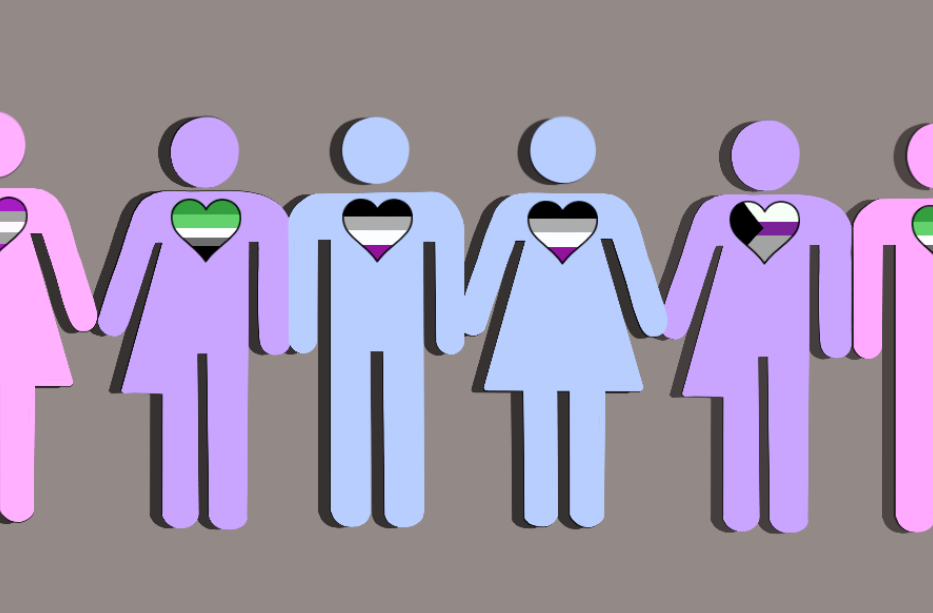People of different sexual orientations often date and engage in romantic relationships with people who are also a part of their same orientation. Sometimes that can be a confusing experience.
It’s important to remember that your sexual orientation and your gender identity don’t necessarily go hand-in-hand. They may be influenced by one another, but it’s up to you to define them in a way that makes the most sense for you.
Asexual
Asexuals are people who have no or little interest in sex. This can be because they don’t experience romantic attraction, or they find sex repellent.
If you’re asexual, it’s important to note that asexuality is not a mental disorder or a temporary choice like hypoactive sexual desire disorder (HSDD) or sexual aversion disorder (SAD). Asexuality is a distinct sexual orientation.
It is also important to distinguish between sexual attraction and sexual desire. While many people who are asexual do have feelings of romantic attraction, they may not necessarily want to share sex with anyone.
These feelings can be strong, or they can be weak. The difference is that asexual people feel these feelings for longer than those who aren’t asexual, says Dr. Rhodes, who works with asexuals at her clinic in California.
If you’re unsure about your asexuality or have questions about sex and relationships, it’s important to seek help from a professional. Talking to a social worker or therapist will give you the chance to explore your feelings and concerns.
Bisexual
Bisexual people are sexually attracted to more than one gender or gender identity. Some define their attraction as being bisexual by stating that they are attracted to both men and women, while others may identify as bisexual when speaking with friends in the LGBTQ community but further specify their identity as pansexual or fluid when talking with those who are not.

Many bisexuals choose to remain anonymous about their sexual orientation, and their sexual identities can remain the same throughout their lives or change depending on who they are attracted to, romantically partnered with or sexually active with. This is a normal part of self-discovery and is not something that should be rushed or forced.
The biggest sign that you might be bisexual is when you are attracted to more than one gender, or when you fantasize about being with someone of a different gender. But like all feelings, bisexuality can be confusing and you might want to give it time before claiming a label.
Heterosexual
Heterosexual people typically have romantic or sexual attraction to other men or women of their same gender. However, they may also have romantic attraction to people of a different gender.
The sexual orientation of a person can change over time, depending on their romantic or sexual relationships. This is normal and completely okay.
Often, heterosexuals will be more open to same-sex attractions as they get older and learn about continuous or fluid theories of sexual orientation.
These theories are often based on research and studies of sexual behaviors. They are commonly used in social science to understand and explain human behavior.
Many people, including scientists, believe that sexual orientation is a continuum and not a set of discrete identities. It is also believed that sexuality is not innate.
Biologist Alfred Kinsey first introduced the Kinsey Scale in 1948 to determine men’s sexual preferences. He rated his subjects’ sexuality on a scale from zero (exclusively heterosexual) to six (exclusively homosexual).
Homosexual
Having sexual and romantic attractions to people of the same gender is a common aspect of homosexual behavior. During a person’s life, this may occur in various situations, including at home, in school, in the workplace and in religious settings.
In addition to these relationships, some people have other sexual experiences. These are called situational homosexual behaviors.
Some of these behaviors occur in situations where there is no opportunity for heterosexual interaction, such as in prisons. This is why it’s important for heterosexuals to understand the different ways that gay, lesbian and bisexual people experience sex and to work with lesbian, gay and bisexual communities to combat prejudice and discrimination.
Having a lesbian, gay or bisexual orientation is not a disorder, but it can be difficult to accept. This is because of stigma and stereotypes that depict lesbian, gay and bisexual individuals as abnormal or dysfunctional. However, several decades of research and clinical experience have shown that both heterosexual and homosexual behaviors are normal aspects of human sexuality.

Pansexual
Pansexual sexual orientation describes a person who experiences romantic attraction to people of all genders. The word has risen in popularity recently thanks to a number of celebrity pansexuals, including Sam Smith and Miley Cyrus.
The term is a growing part of the LGBTQ+ community, and scholars attribute it to millennials’ acceptance of sexual and gender diversity and their desire to be more inclusive. It also stems from social activism and identity reclamation, explains Jennifer Mosley, an associate director of the Bisexual Resource Center.
“Pansexuality means that someone can be attracted to a variety of genders and identities, including agender, androgynous, bigender, genderqueer, or non-binary,” Mosley explains. It’s important to note that, while many pansexuals describe their preferences as based on personality rather than gender, this doesn’t mean they haven’t been attracted to other people of different genders in the past.
The key to a successful relationship with someone who is pansexual is to respect their boundaries, Mosley advises. You should also be willing to be open and discuss your own feelings and opinions, she says.
Polysexual
Polysexual is a sexual orientation that can be defined by attraction to more than one gender. Romantic Relationships It’s a term that has been around for a long time, but it’s also one that has recently become more common than ever before.
People with polysexual orientations may choose to have relationships with a variety of people, but their preference for certain genders isn’t always an essential part of that relationship. This can make it challenging to find a partner that you’re happy with.
If you’re interested in learning more about polysexuality, consider reading books and podcasts about the subject or following queer educators on social media. They can offer you a great insight into the world of polysexuality and how it affects your life.
You should also try to educate yourself about your loved ones’ sexual orientations. This can help you to better understand how they feel and how they want to be supported. This can help you to be an ally, whether you’re a friend or a partner of a person with polysexual orientation.
Greyromantic
Greyromanticism is a term that is used to describe people who experience romantic attraction but do not always desire romantic relationships. Often times, people who identify as greyromantic may only be attracted to someone once or twice in their lifetime and do not necessarily have a romantic relationship with that person.
A person who is greyromantic can also be aromantic or demiromantic, meaning that they experience romantic attraction but do not desire to have sex with the object of their attraction. This can be an interesting way to view love and relationships.
This type of love is not as fully romantic as a bisexual or heteroromantic relationship, but it can be deep and fulfilling. It is important to remember that there is no right or wrong answer to this question, as it depends on the individual.
As with all sexual orientations, it is important to educate yourself about your greyromantic identity and the ways that it can impact your romantic relationships. You can do this by learning more about the different facets of greyromanticism and by connecting with others who share your identity.
Demiromantic
Demiromanticism, also known as demisexuality, is a sexual orientation where people feel romantic attraction towards individuals with whom they form close emotional bonds. Romantic Relationships This bond can be romantic or platonic, and it may take months or years before sexual attraction arises.
Demiromantic people are often mistaken for aromantic individuals who experience romantic attraction only after they develop a strong emotional bond with another person. However, demiromantic and aromantic individuals have different dating habits based on their romantic preferences.
They may prefer to go on dates with friends or family instead of strangers, and they avoid blind dates or speed dating as a means to identify with their romantic identity. They may have specific dating routines that represent their romantic preference, including going on date after date with friends or family before expressing their interest in a new partner, explains demiromantic expert and author Jessica D’Allaird.
Demiromanticism is a relatively new concept, and it can be confusing to those who don’t understand it. It is important to educate yourself and others on the subject so you can come out as a demiromantic in a safe and welcoming environment.

